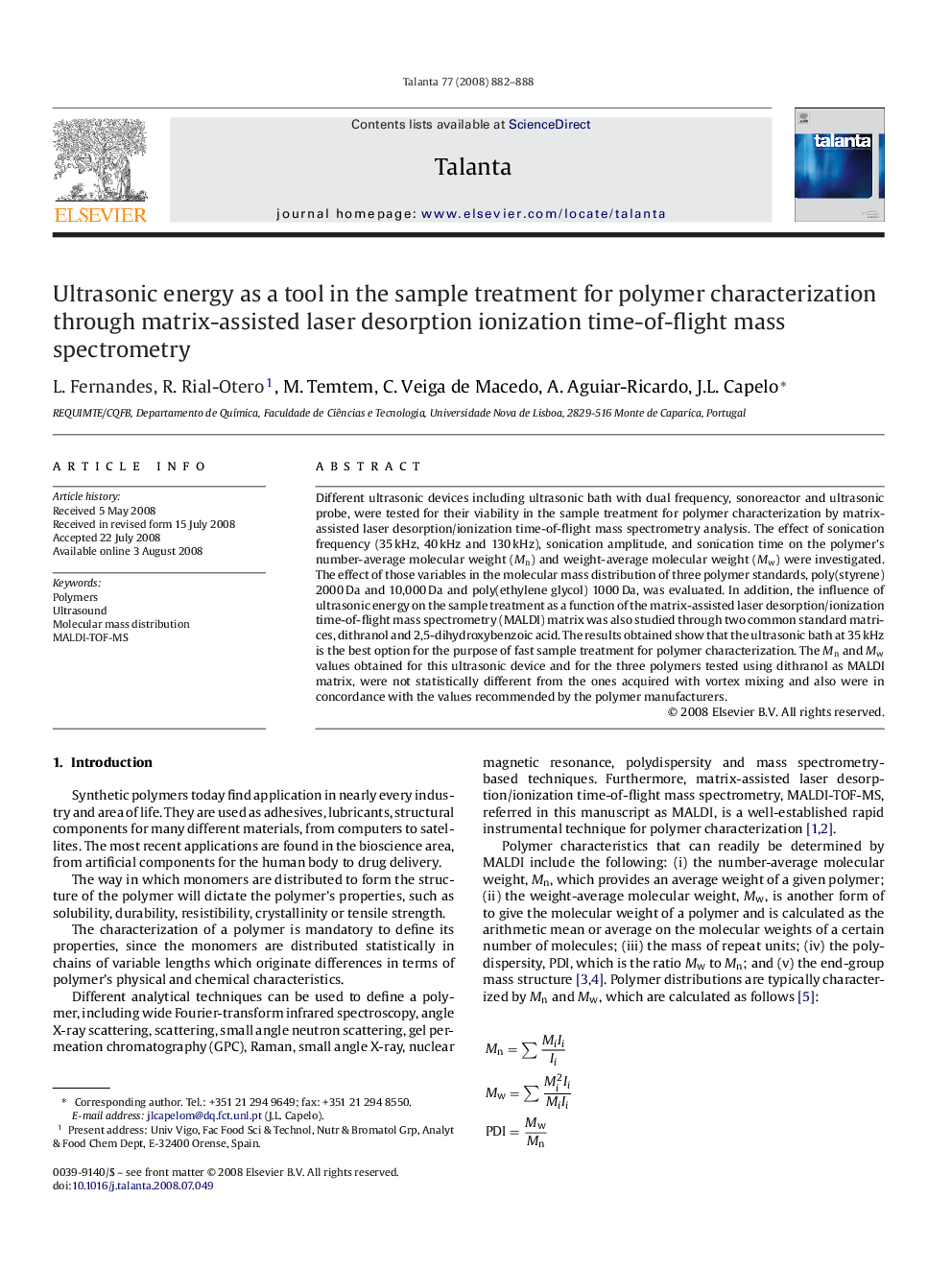| Article ID | Journal | Published Year | Pages | File Type |
|---|---|---|---|---|
| 1243152 | Talanta | 2008 | 7 Pages |
Abstract
Different ultrasonic devices including ultrasonic bath with dual frequency, sonoreactor and ultrasonic probe, were tested for their viability in the sample treatment for polymer characterization by matrix-assisted laser desorption/ionization time-of-flight mass spectrometry analysis. The effect of sonication frequency (35Â kHz, 40Â kHz and 130Â kHz), sonication amplitude, and sonication time on the polymer's number-average molecular weight (Mn) and weight-average molecular weight (Mw) were investigated. The effect of those variables in the molecular mass distribution of three polymer standards, poly(styrene) 2000Â Da and 10,000Â Da and poly(ethylene glycol) 1000Â Da, was evaluated. In addition, the influence of ultrasonic energy on the sample treatment as a function of the matrix-assisted laser desorption/ionization time-of-flight mass spectrometry (MALDI) matrix was also studied through two common standard matrices, dithranol and 2,5-dihydroxybenzoic acid. The results obtained show that the ultrasonic bath at 35Â kHz is the best option for the purpose of fast sample treatment for polymer characterization. The Mn and Mw values obtained for this ultrasonic device and for the three polymers tested using dithranol as MALDI matrix, were not statistically different from the ones acquired with vortex mixing and also were in concordance with the values recommended by the polymer manufacturers.
Related Topics
Physical Sciences and Engineering
Chemistry
Analytical Chemistry
Authors
L. Fernandes, R. Rial-Otero, M. Temtem, C. Veiga de Macedo, A. Aguiar-Ricardo, J.L. Capelo,
